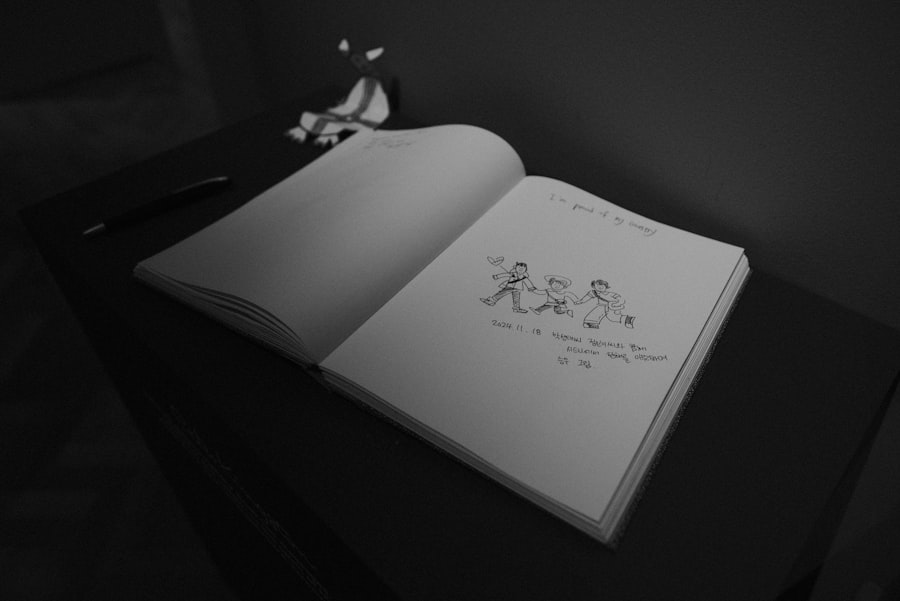As you step into the world of animation, you may notice a seismic shift taking place, driven by the rapid advancements in artificial intelligence (AI). The animation industry, once dominated by traditional techniques and painstaking manual labor, is now embracing AI technologies that promise to redefine creativity and efficiency. This revolution is not just a passing trend; it represents a fundamental change in how stories are told and visualized.
With AI tools becoming increasingly sophisticated, animators are finding themselves at a crossroads, where the fusion of technology and artistry opens up new avenues for expression. The integration of AI into animation is not merely about replacing human effort; it’s about enhancing the creative process. You might find yourself intrigued by how AI can assist in generating ideas, automating repetitive tasks, and even creating entire scenes with minimal input.
This transformation is reshaping the landscape of animation, making it more accessible to aspiring creators while also challenging seasoned professionals to adapt to new methodologies. As you delve deeper into this topic, you will discover the multifaceted impact of AI on traditional animation techniques, job dynamics, and the future of creativity in this vibrant industry.
Key Takeaways
- AI revolutionizes animation industry by enhancing efficiency and creativity
- Traditional animation techniques are being transformed by AI, leading to faster production and cost savings
- Job displacement and automation are concerns in the animation industry due to AI advancements
- Collaboration between AI and human creativity presents new opportunities for animators
- Reskilling and upskilling for animators are essential to adapt to the AI revolution in animation industry
Impact of AI on Traditional Animation Techniques
As you explore the impact of AI on traditional animation techniques, you may realize that the essence of animation is being redefined. Traditional methods, which often involve hand-drawn frames or meticulous 3D modeling, are now complemented by AI algorithms that can streamline these processes. For instance, AI can analyze existing animations and suggest improvements or automate in-between frames, significantly reducing the time required for production.
This means that what once took weeks or months can now be accomplished in a fraction of the time, allowing animators to focus more on storytelling and less on technical execution. However, this shift does not come without its challenges. You might find yourself pondering whether the artistry inherent in traditional animation is being compromised.
While AI can enhance efficiency, it also raises questions about authenticity and the human touch in creative works. The delicate balance between leveraging technology and preserving artistic integrity is a conversation that animators must engage in as they navigate this new landscape. As you consider these implications, it becomes clear that the relationship between AI and traditional techniques is complex and evolving.
Job Displacement and Automation in Animation Industry

The rise of AI in the animation industry inevitably brings concerns about job displacement and automation. As you observe the increasing capabilities of AI tools, it’s natural to wonder how these advancements will affect employment opportunities for animators. While some roles may become obsolete due to automation—such as those focused on repetitive tasks—there is also a growing recognition that new job categories are emerging.
You may find that positions requiring a blend of technical skills and creative vision are becoming more valuable than ever. Moreover, the fear of job loss can overshadow the potential for innovation within the industry. As you reflect on this dynamic, consider how animators can adapt to these changes by embracing new technologies rather than resisting them.
The ability to work alongside AI can enhance your skill set and open doors to new creative possibilities. By understanding how to leverage AI tools effectively, you can position yourself as an indispensable asset in a rapidly evolving job market.
Advancements in AI Technology and Animation
| Advancements | AI Technology | Animation |
|---|---|---|
| Real-time Processing | Improved algorithms allow for faster processing of data | Realistic movements and effects in animated characters |
| Deep Learning | Enhanced ability to recognize patterns and make decisions | Creation of more detailed and lifelike animations |
| Natural Language Processing | Better understanding and generation of human language | Integration of voice commands and dialogue in animations |
| Computer Vision | Improved object recognition and image processing | Enhanced visual effects and rendering in animated scenes |
As you delve into the advancements in AI technology within the animation sector, you will discover a plethora of tools designed to enhance creativity and streamline workflows. From machine learning algorithms that analyze vast datasets to generate unique character designs to neural networks that can create lifelike animations from simple sketches, the possibilities are virtually limitless. These innovations empower you as an animator to push the boundaries of your craft, enabling you to experiment with styles and techniques that were previously unimaginable.
Furthermore, advancements in AI are not limited to visual aesthetics; they also extend to storytelling capabilities. You may find it fascinating how AI can analyze narrative structures and audience preferences to suggest plot developments or character arcs. This data-driven approach allows for more engaging storytelling while still leaving room for your unique voice as a creator.
As you embrace these technological advancements, you will likely find that they serve as catalysts for your creativity rather than mere replacements for traditional methods.
Challenges Faced by Animators in the Age of AI
While the integration of AI into animation presents exciting opportunities, it also brings forth a set of challenges that you must navigate. One significant concern is the potential loss of artistic control. As AI systems become more autonomous in generating content, you may feel a sense of unease about relinquishing creative decisions to algorithms.
This challenge prompts a critical examination of what it means to be an artist in an age where machines can produce visually stunning work with minimal human input. Additionally, there is the challenge of keeping pace with rapidly evolving technology. As an animator, you may find yourself constantly learning new tools and techniques to stay relevant in a competitive landscape.
This ongoing need for adaptation can be both exhilarating and overwhelming. It requires a commitment to lifelong learning and a willingness to embrace change as an integral part of your professional journey.
Opportunities for Collaboration between AI and Human Creativity

Despite the challenges posed by AI in animation, there are abundant opportunities for collaboration between technology and human creativity. You may find that working alongside AI can enhance your artistic process rather than hinder it. For instance, AI can serve as a brainstorming partner, generating ideas or suggesting variations on your concepts that you might not have considered otherwise.
This collaborative approach allows you to harness the strengths of both human intuition and machine efficiency. Moreover, as you explore this partnership further, you may discover that AI can help democratize animation by making it more accessible to individuals who may not have traditional artistic training. With user-friendly tools powered by AI, aspiring animators can bring their visions to life without needing extensive technical skills.
This shift opens up new avenues for diverse voices and stories within the animation landscape, enriching the industry as a whole.
Future of Animation Jobs in the Era of AI
As you contemplate the future of animation jobs in an era dominated by AI, it becomes evident that adaptability will be key. While certain roles may evolve or diminish due to automation, new opportunities will arise that require a blend of creativity and technical proficiency. You might envision roles such as AI-assisted animators or creative technologists who specialize in integrating AI into storytelling processes.
These positions will demand a unique skill set that combines artistic vision with an understanding of technology. Furthermore, as audiences become more accustomed to high-quality animations generated with the help of AI, there will likely be an increased demand for innovative content creators who can leverage these tools effectively. The future may hold exciting prospects for those willing to embrace change and explore uncharted territories within the animation industry.
By staying informed about emerging trends and continuously honing your skills, you can position yourself at the forefront of this evolving landscape.
Reskilling and Upskilling for Animators in Response to AI Revolution
In light of the ongoing AI revolution in animation, reskilling and upskilling have become essential for animators seeking to thrive in this changing environment. You may find it beneficial to invest time in learning about AI technologies and their applications within your field. Online courses, workshops, and industry conferences can provide valuable insights into how to effectively integrate AI into your creative process.
Moreover, embracing interdisciplinary learning can enhance your adaptability as an animator. By exploring fields such as data science or machine learning, you can gain a deeper understanding of how these technologies work and how they can be harnessed for creative purposes. This proactive approach not only equips you with new skills but also positions you as a forward-thinking professional ready to tackle the challenges posed by an increasingly automated industry.
Ethical Considerations in AI-Generated Animation
As you navigate the intersection of AI and animation, ethical considerations come into play that warrant careful reflection. One pressing issue is authorship: when an AI generates content based on existing works or styles, who owns that creation? You may find yourself grappling with questions about intellectual property rights and the implications for original creators whose work informs these algorithms.
Additionally, there are concerns about representation and bias within AI-generated animations. If training data reflects societal biases or stereotypes, there is a risk that these issues will be perpetuated in animated content. As an animator, it’s crucial to advocate for ethical practices in AI development and usage within your industry.
By engaging in conversations about these ethical dilemmas, you can contribute to shaping a more responsible future for animation.
Innovations in AI-Driven Animation Tools and Software
The landscape of animation tools is rapidly evolving thanks to innovations driven by AI technology. You may find yourself excited by software that utilizes machine learning algorithms to assist with character rigging or facial animation, significantly reducing manual labor while enhancing realism. These tools not only streamline workflows but also empower you to focus on higher-level creative decisions rather than getting bogged down by technical details.
Moreover, collaborative platforms that integrate AI capabilities allow teams to work together seamlessly across different locations and time zones. As remote work becomes increasingly common in the animation industry, these innovations facilitate communication and collaboration among artists worldwide. By embracing these cutting-edge tools, you can enhance your productivity while fostering a more connected global community of animators.
Navigating the Changing Landscape of Animation Industry with AI
As you reflect on the changing landscape of the animation industry shaped by artificial intelligence, it becomes clear that this revolution presents both challenges and opportunities for creators like yourself.
By embracing reskilling initiatives and staying informed about advancements in AI-driven tools, you can position yourself as a forward-thinking animator ready to thrive in this dynamic environment.
Ultimately, navigating this new terrain requires an open mind and a willingness to adapt. As you continue your journey in animation, remember that technology should serve as an ally rather than an adversary. By harnessing the power of AI while remaining true to your artistic vision, you can contribute to shaping a vibrant future for animation—one where creativity knows no bounds and stories continue to inspire audiences around the world.
The rapid advancement of artificial intelligence is reshaping various industries, and animation is no exception. As AI tools become more sophisticated, they are increasingly capable of performing tasks traditionally done by human animators, such as generating complex scenes and characters with minimal input. This shift is causing concern among professionals in the field, who fear that AI could lead to job displacement.
